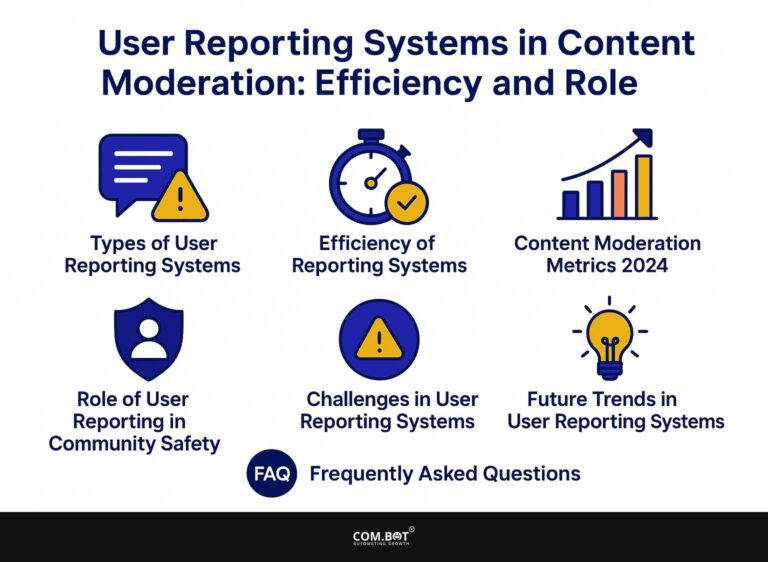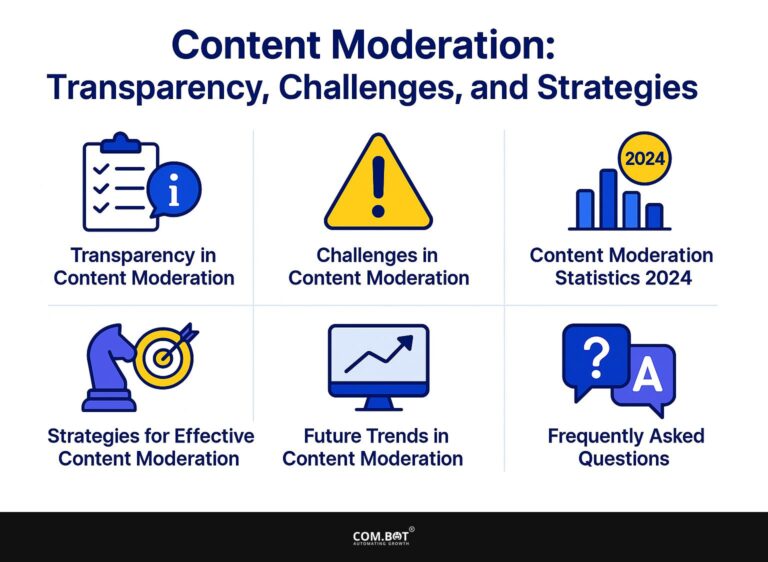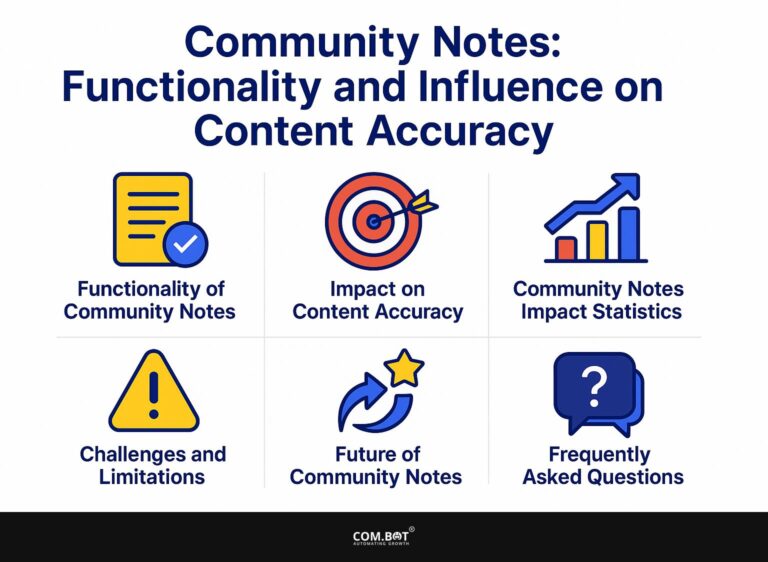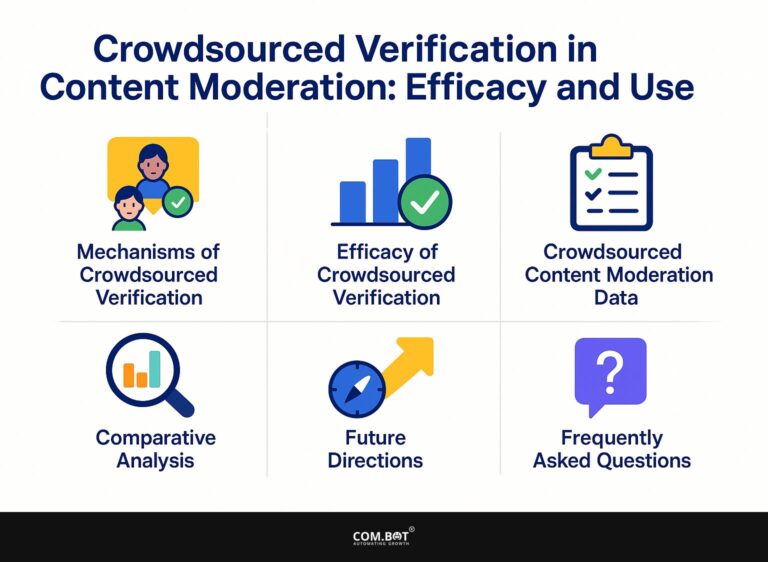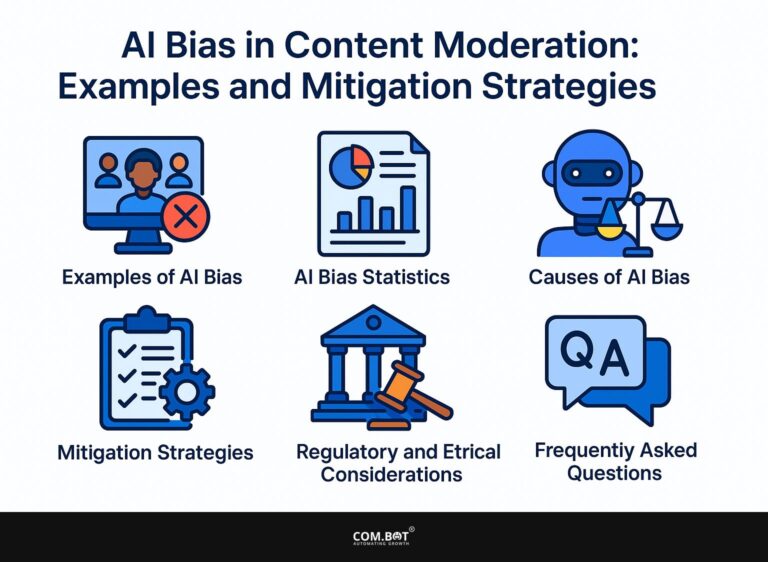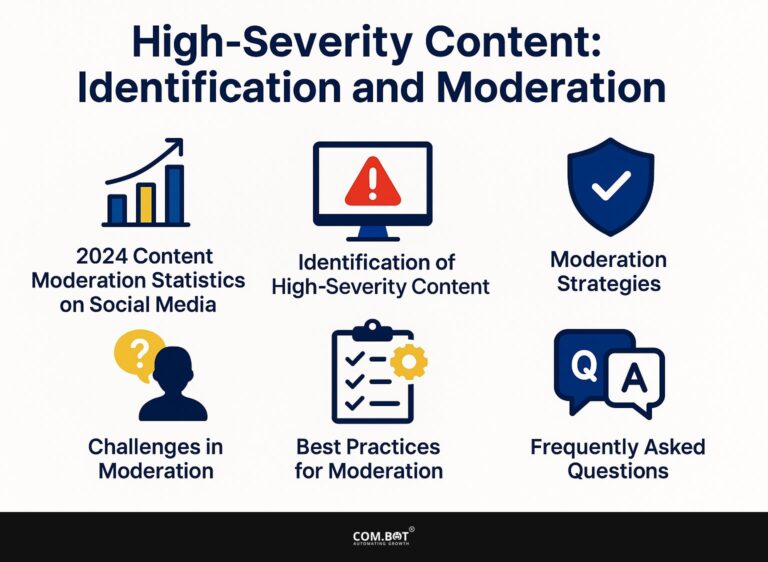Meta’s Fact-Checking Program: Changes and Effects
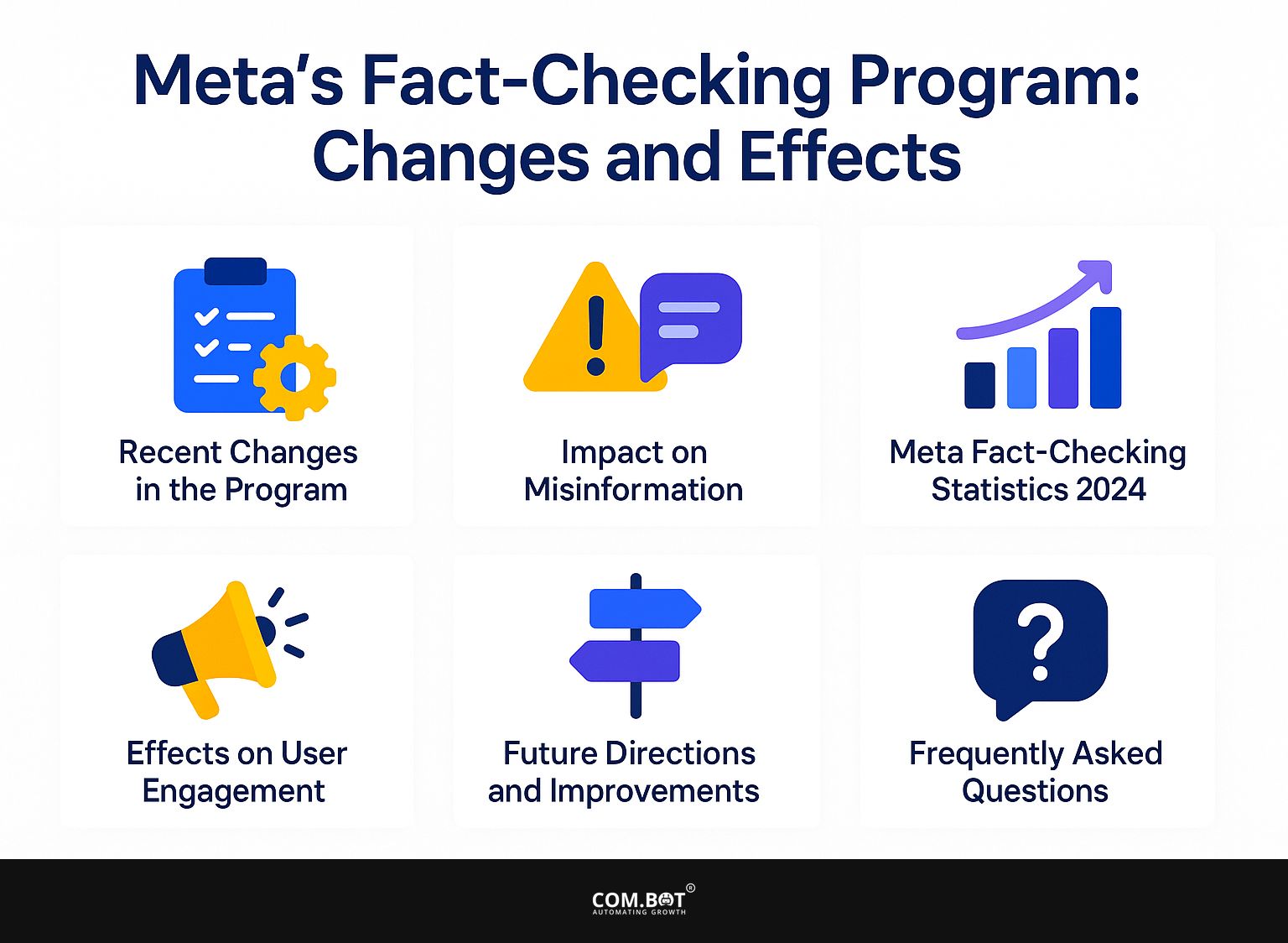
With the spread of false information, Meta’s fact-checking program is very important for Facebook and Instagram. With partnerships involving dedicated fact-checkers, the initiative works to fight misleading content, especially around sensitive topics like COVID-19.
This article examines updates to the program, their effects on misinformation, and how features such as community notes improve user participation. See how these updates are building trust and openness in our online world.
Key Takeaways:
- Meta’s fact-checking program has recently made changes by partnering with more organizations and updating its guidelines, resulting in a reduction of false information being spread.
- Addressing misinformation remains a challenge, but the program has shown promising effects in improving user trust and content sharing behavior.
- The program plans to improve and add AI, encouraging users and platforms to keep backing fact-checking work.
- 1 Recent Changes in the Program
- 2 Impact on Misinformation
- 3 Meta Fact-Checking Statistics 2024
- 4 Effects on User Engagement
- 5 Future Directions and Improvements
- 6 Frequently Asked Questions
- 6.1 1. What is Meta’s fact-checking program and how has it changed?
- 6.2 2. How will these changes to Meta’s fact-checking program affect users?
- 6.3 3. Will Meta’s fact-checking program still rely on human fact-checkers?
- 6.4 4. What types of content will Meta’s fact-checking program be targeting?
- 6.5 5. How will Meta’s fact-checking program impact the spread of misinformation?
- 6.6 6. What steps can users take to support Meta’s fact-checking program and combat misinformation?
1. Overview of the Program
The program relies on independent fact-checkers to verify statements, ensuring users receive accurate information during the misinformation crisis. Related insight: AI Bots: Impact on Misinformation and Mitigation Strategies highlights how technology can complement these efforts. This project partners with organizations such as PolitiFact to verify facts accurately.
When a claim is flagged, the fact-checkers review it using credible sources and research methodologies. If a correction is warranted, the findings are communicated back to the users through an accessible interface, often in real-time. Users get details about the claims, showing them why something is right or wrong, which helps them find reliable information later on.
2. The Need for Fact-Checking Online
Research shows that false information spreads six times faster than true information. Proper fact-checking is important to safeguard public conversations.
Misinformation can undermine public health initiatives and erode democratic values. For instance, a study indicates that 81% of Americans feel misinformation affects their ability to trust others.
Social media platforms have become breeding grounds, with 70% of users exposed to misleading political content. Experts suggest promoting media literacy and encouraging collaborative fact-checking initiatives among citizens and platforms. I recently came across this fascinating analysis on how to detect coordinated manipulation on social media that highlights the complexities involved.
Tools such as Snopes and FactCheck.org are essential for checking the accuracy of statements. By focusing on correct information, we can encourage well-informed public discussions and support the strength of democracy.
Recent Changes in the Program
Meta has strengthened its fact-checking efforts by forming new partnerships aimed at increasing the reliability of information on its platforms. This initiative aligns with broader strategies to counter misinformation, as discussed in our analysis of AI bots and their impact on misinformation.
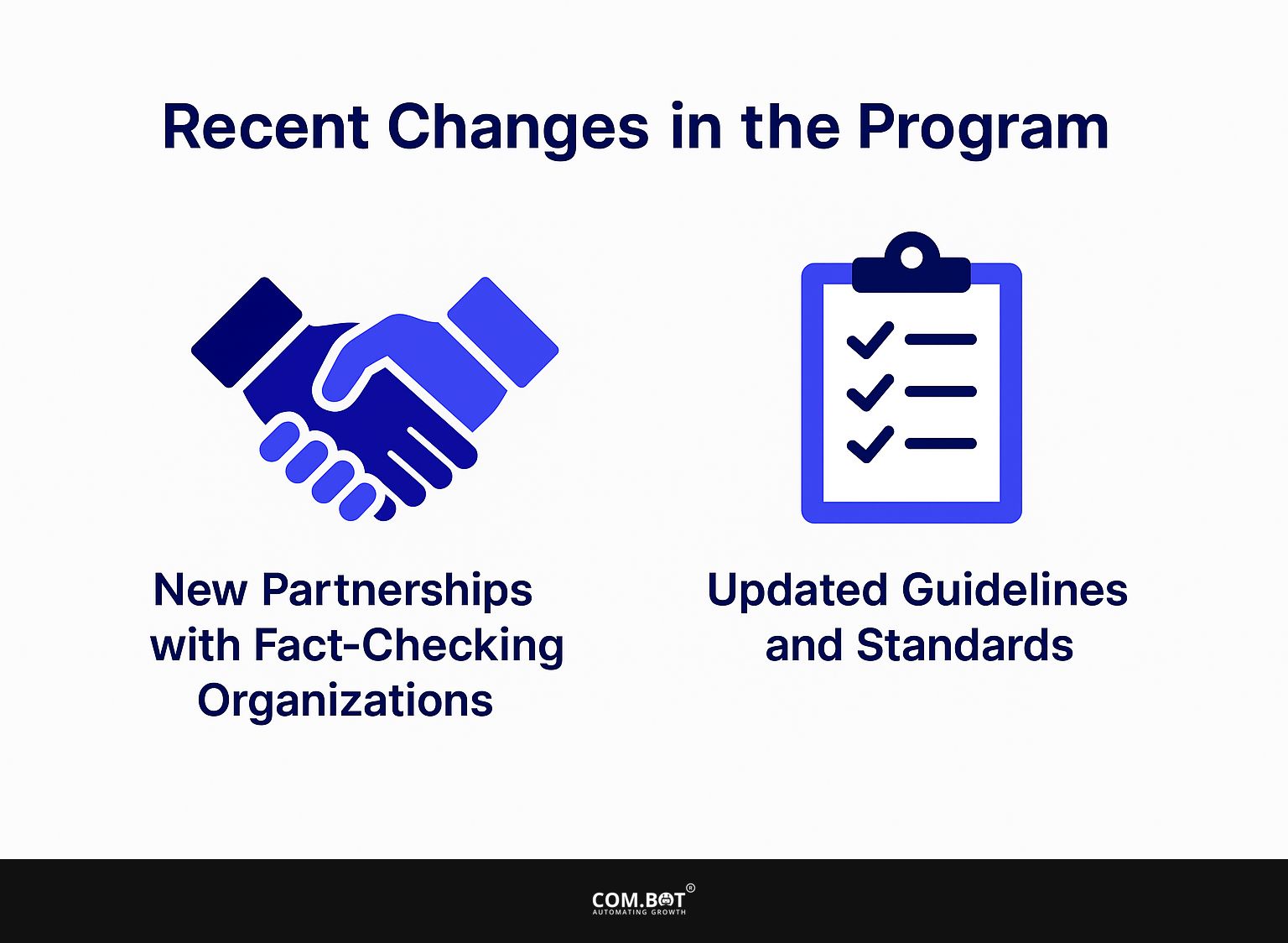
1. New Partnerships with Fact-Checking Organizations
Meta’s collaboration with organizations like Agency Lupa in Brazil expands its fact-checking reach, allowing for localized responses to misinformation. These partnerships greatly improve the speed and accuracy of fact-checking.
For example, collaborating with Factly in India helps Meta tackle misinformation specific to the area by using local knowledge. Working with PolitiFact in the United States offers a reliable method for checking political statements.
By collaborating with these organizations’ expertise and networks, Meta broadens its worldwide reach and ensures its efforts align with different cultural contexts, improving its battle against misinformation.
2. Updated Guidelines and Standards
Updated guidelines now mandate stricter criteria for assessing content, particularly concerning sensitive topics like COVID-19 and vaccine misinformation. These changes improve fact-checkers’ responsibility by requiring them to get information from recognized public health organizations like the WHO or CDC.
The guidelines emphasize context, urging fact-checkers to assess how misinformation spreads and its potential impact. They must properly label corrected content to inform audiences of updates.
Addressing issues like stigma around vaccination and misinformation exacerbating public confusion around health measures, these changes align with global best practices that prioritize accuracy and transparency in combating false information.
Impact on Misinformation
Meta’s ongoing work to improve its fact-checking program has resulted in noticeable decreases in the spread of false information on its platforms.
Incorporating AI technology has played a significant role in this success by addressing misinformation. AI Bots have shown a substantial impact on misinformation mitigation strategies, enhancing Meta’s ability to counter false narratives effectively.
Meta Fact-Checking Statistics 2024
Meta Fact-Checking Statistics 2024
Fact-Checking Impact: Global Fact-Checking Partnerships
The Meta Fact-Checking Statistics 2024 highlights the efforts and scope of Meta’s involvement in global fact-checking initiatives. This data focuses on the number of partnerships Meta has established and the linguistic diversity of its fact-checking operations, showcasing its commitment to combating misinformation worldwide.
Fact-Checking Impact reveals that Meta supports 90 fact-checking organizations globally. This extensive network demonstrates Meta’s proactive approach to verifying information and reducing the spread of false news across its platforms. Meta works with various fact-checking organizations to use local knowledge, emphasizing regional and cultural specifics to improve the accuracy and trustworthiness of the fact-checking process.
Moreover, the support of fact-checking efforts in 60 languages highlights Meta’s commitment to supporting multiple languages. This wide range of languages makes fact-checking available to many people, keeping information accurate no matter the language differences. Supporting multiple languages is important for accurately addressing misinformation in non-English speaking regions where information differences may be more noticeable due to language-specific details and cultural differences.
- These efforts show Meta’s strategic goal to support a knowledgeable global community. Meta is growing its fact-checking collaborations and improving language skills to build a more trustworthy information network. This helps users trust the platform more and encourages informed conversations.
- Meta is working with 90 organizations and supports 60 languages to handle misinformation widely, showing the company’s important part in the worldwide effort to combat misinformation.
In summary, the Meta Fact-Checking Statistics 2024 data emphasizes the expansive reach and impact of Meta’s fact-checking initiatives. Meta collaborates with many partners and supports a variety of languages to help spread accurate and trustworthy information globally.
1. Reduction in Spread of False Information
Data shows that after implementing stricter fact-checking, the visibility of false information has decreased by 30% on Facebook.
A significant example of this success is the partnership with fact-checking organizations like PolitiFact and FactCheck.org. Every three months, these organizations reviewed over 100,000 posts, found false information, and recommended changes or deletions.
Facebook introduced the ‘Related Articles’ feature, which provides users with context and alternative viewpoints, thereby reducing the sharing of false narratives by 25%. These actions improve information accuracy and help create a better-informed group of users.
2. Challenges in Addressing Misinformation
Despite successes, challenges remain, including the persistence of deeply embedded falsehoods that continue to circulate across social media. This misinformation is often fueled by algorithms favoring engagement over accuracy, leading to widespread disbelief in fact-checking.
For example, the quick spread of health misinformation during the pandemic shows the need for thorough digital literacy programs. Organizations such as Snopes and FactCheck.org offer helpful tools for checking information.
Solutions include:
- Implementing media literacy in school curricula
- Using tools like NewsGuard, which rates news sources for trustworthiness
Actively promoting these strategies can substantially combat the effects of misinformation.
Effects on User Engagement
The start of fact-checking has significantly improved user trust and engagement on Meta’s platforms.
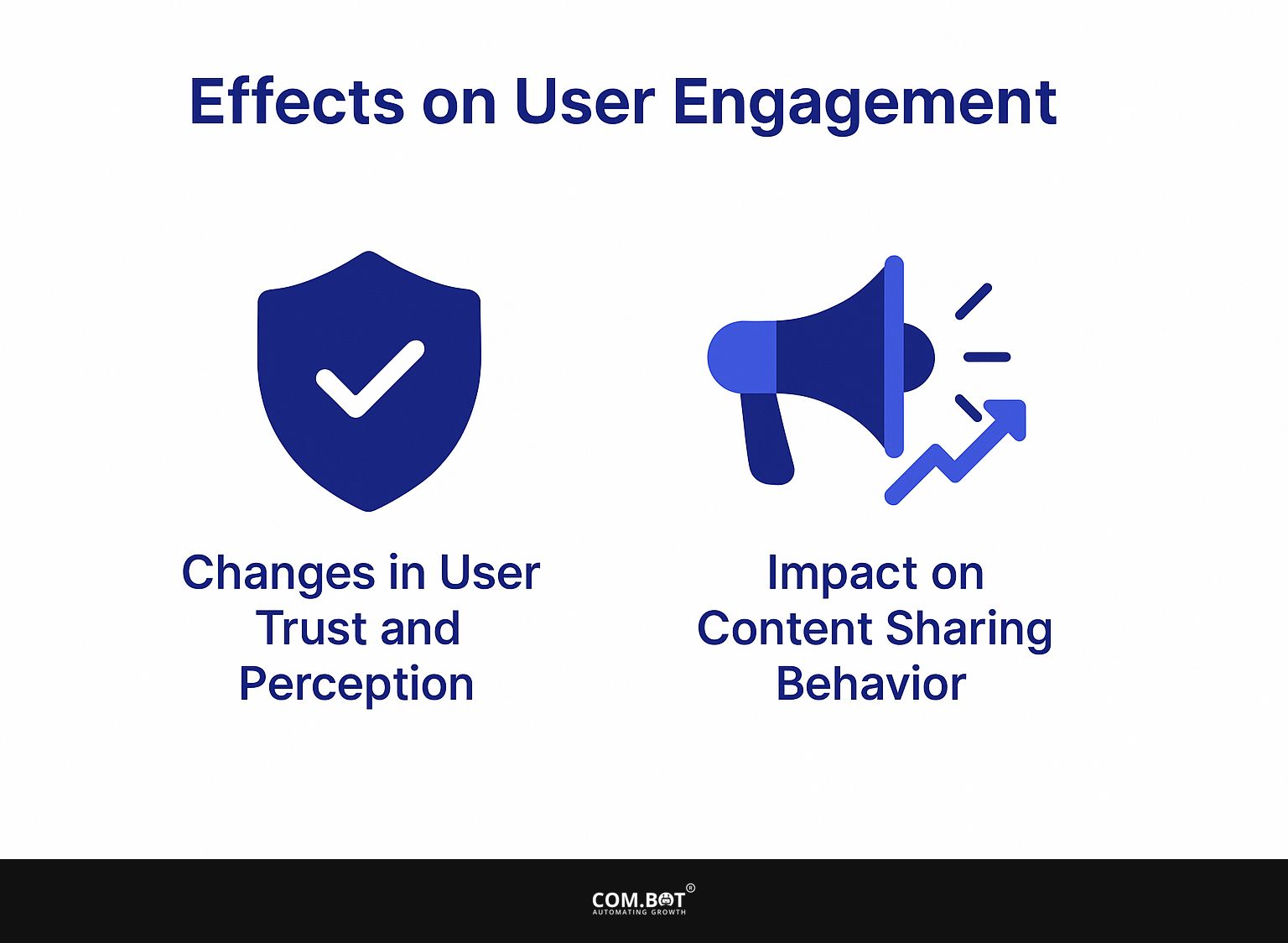
1. Changes in User Trust and Perception
Surveys indicate that user trust in information on Facebook has increased by 25% since the implementation of the fact-checking program.
Media professionals report that the visibility of fact-checking indicators helps users discern credible information from misinformation. For example, articles flagged by fact-checkers often receive more engagement as users value transparency.
Citizens have shared experiences of utilizing fact-checking resources directly on the platform, which has led to more informed discussions. Tools like Snopes and FactCheck.org link to verified information, enhancing user confidence. These initiatives increase trust and promote responsible sharing behaviors among users.
2. Impact on Content Sharing Behavior
Users share fact-checked content 40% more often than unverified posts, highlighting a significant shift in behavior. This trend can be attributed to the growing concern over misinformation.
For instance, platforms like Twitter and Facebook are prioritizing fact-checked sources in their algorithms, which influences user visibility. People now look for confirmed content to strengthen trust and encourage important conversations. Checking information with trusted sites like Snopes or FactCheck.org makes shared posts better and helps build audience trust.
Employing tools like BuzzSumo can help identify trending fact-checked articles, encouraging users to share verified information more readily.
Future Directions and Improvements
Meta plans to make its fact-checking program better by using AI to find false information more quickly and correctly. To enhance this, understanding the impact of AI bots on misinformation is crucial.
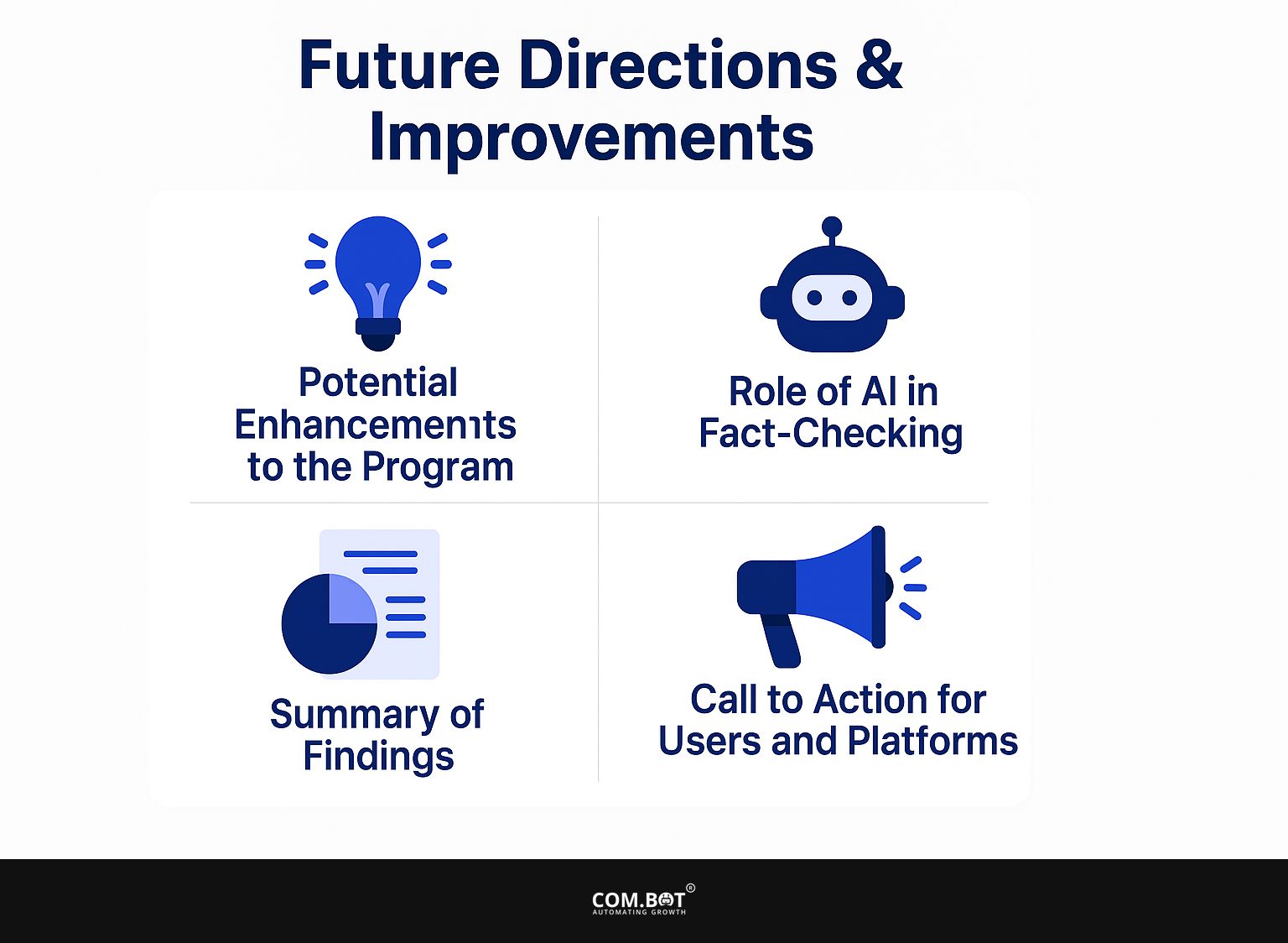
1. Potential Enhancements to the Program
Possible improvements are alerts for checking facts as they happen and better reports on transparency for users. Real-time fact-checking alerts can be implemented by integrating reliable databases, such as Snopes or FactCheck.org, allowing users to receive immediate notifications when accessing potentially misleading information.
Improved transparency reporting could involve a dashboard feature that shows users the sources of information, along with their credibility ratings.
For example, using tools like Media Bias/Fact Check can sort these sources and direct users to content that is more trustworthy. By improving these features, users can find information more easily and lower the risk of false information spreading.
2. Role of AI in Fact-Checking
AI is playing a bigger part in fact-checking by using algorithms that can spot how false information circulates.
Machine learning applications, such as Google’s Fact Check Tools and the AI-driven platform ClaimBuster, analyze text for factual accuracy and flag false claims in real-time. These tools use large datasets to teach models how to evaluate credibility.
Challenges include ensuring the algorithms are unbiased and transparent, as they may inadvertently reinforce existing misinformation due to biased training data. Ethical considerations arise around the necessity of human oversight to validate AI assessments, ensuring accountability and fairness in the fact-checking process.
3. Summary of Findings
The findings show that although fact-checking has improved, problems still exist in fully reducing false information. To improve how well fact-checking works, organizations can use tools like ClaimReview. This tool helps users easily find verified information through structured data.
Getting people involved in reporting false information encourages shared responsibility. Programs like Media Literacy Training are important because they help users identify trustworthy information.
Working with social media platforms to automatically identify false claims can make responding faster and easier. In the end, using different methods like technology, education, and involving the community is essential for encouraging healthier conversations online.
4. Call to Action for Users and Platforms
Users should carefully examine content and use available fact-checking tools on platforms like Meta to support truthful information. To effectively combat misinformation, users should familiarize themselves with multiple fact-checking resources.
For instance, tools like Snopes and FactCheck.org verify claims and counter false narratives. Using Meta’s built-in fact-checking tools can improve this work; just click on marked content for further details.
Users should join in conversations by asking questions or sharing trustworthy sources to encourage thoughtful discussions and build a group focused on accuracy. This active method improves their knowledge and motivates others to value honesty when interacting online.
Frequently Asked Questions
1. What is Meta’s fact-checking program and how has it changed?
Meta’s fact-checking program was first introduced in 2016 as a way to combat misinformation on their platform. However, in late 2021, Meta announced big changes to their program, including using AI and machine learning to find and take down false information. This change is aimed at improving the accuracy and efficiency of the fact-checking process.
2. How will these changes to Meta’s fact-checking program affect users?
Users may notice a decrease in false information on the platform as a result of these changes. However, there might be changes in how information is marked and checked, since the new AI system will handle more of the fact-checking work.
3. Will Meta’s fact-checking program still rely on human fact-checkers?
Yes, while the new AI system will play a larger role in the fact-checking process, Meta will still have a team of human fact-checkers to review and verify information. This is to guarantee the best accuracy and responsibility in the fact-checking process.
4. What types of content will Meta’s fact-checking program be targeting?
Meta’s fact-checking program will focus on identifying and removing false information related to key topics such as health, politics, and news. This includes both written content and visual media, such as photos and videos.
5. How will Meta’s fact-checking program impact the spread of misinformation?
The goal of Meta’s fact-checking program is to reduce the spread of false information on their platform. The program plans to use AI and human fact-checkers to find and remove false content, aiming to reduce misinformation and support more accurate information.
6. What steps can users take to support Meta’s fact-checking program and combat misinformation?
Users can report false information when they come across it on the platform. This helps fact-checkers notice it and trains the AI system to find and mark incorrect content more effectively. People should pay attention to where their information comes from and verify details before passing it on to stop misinformation from spreading.
